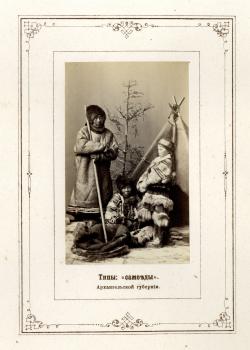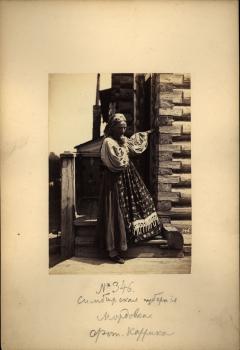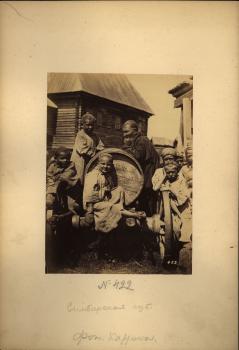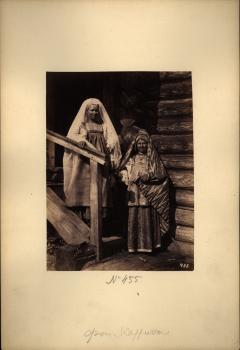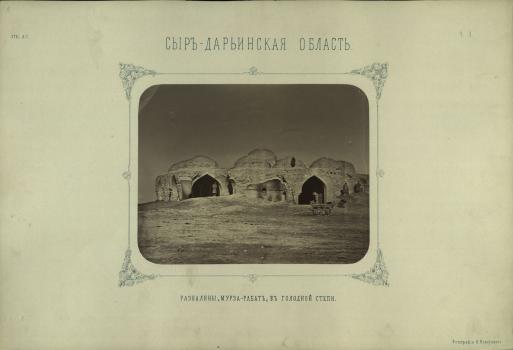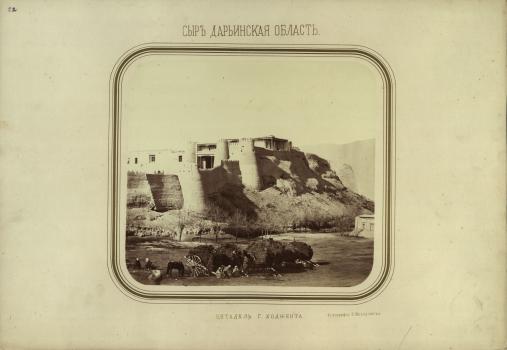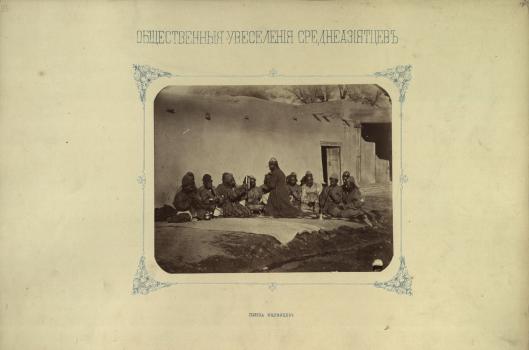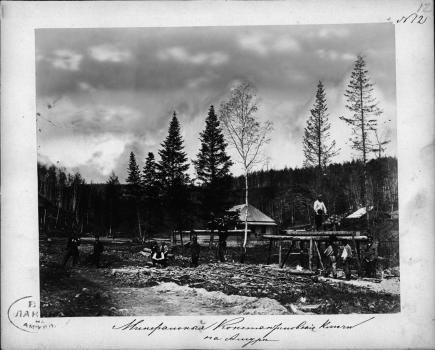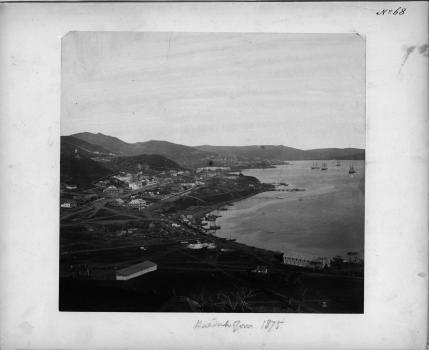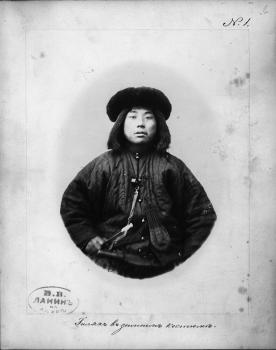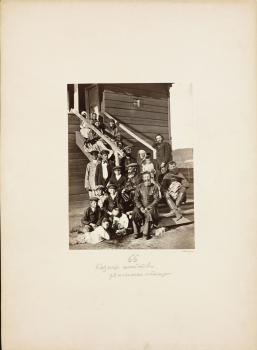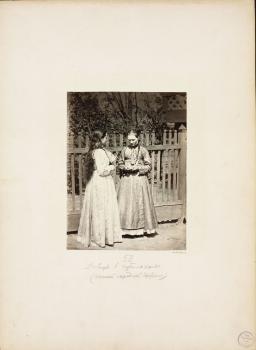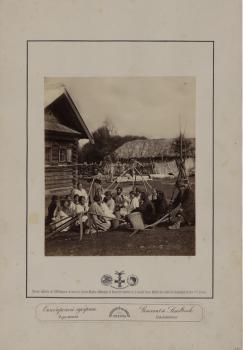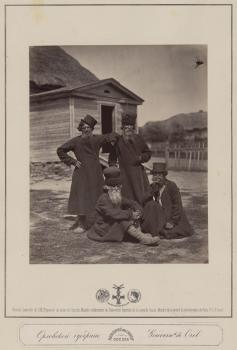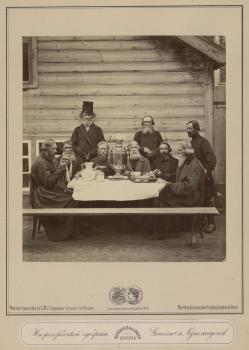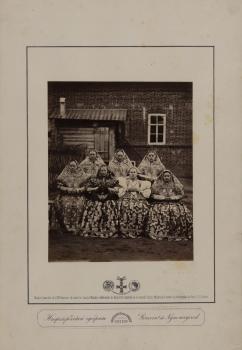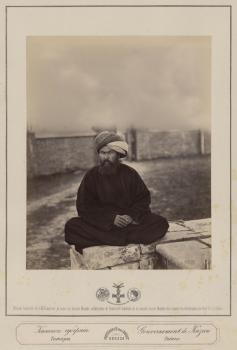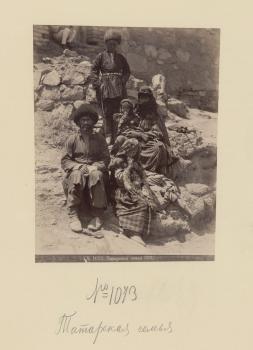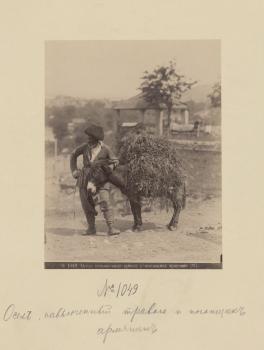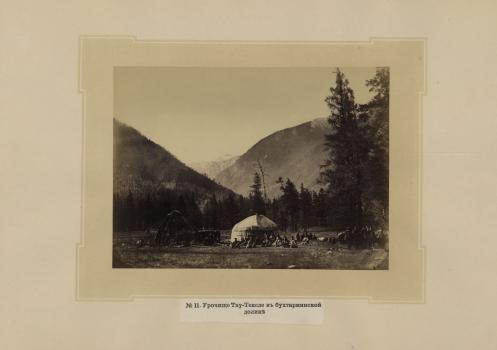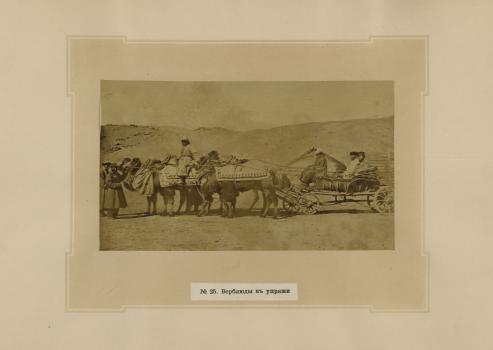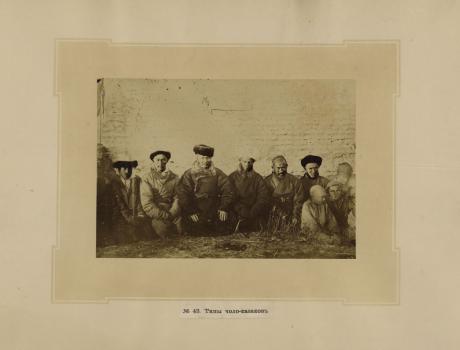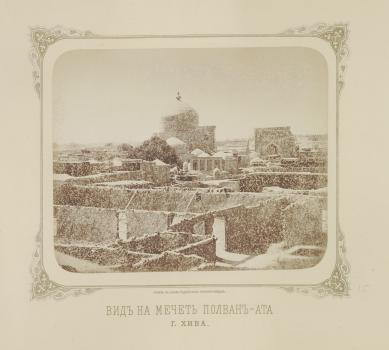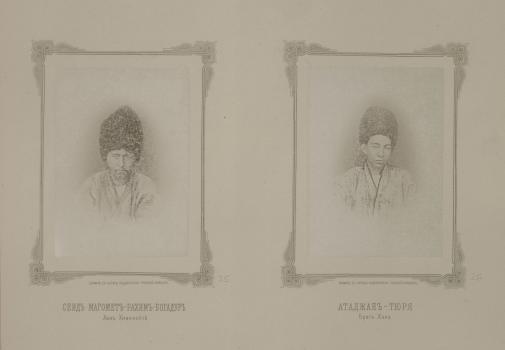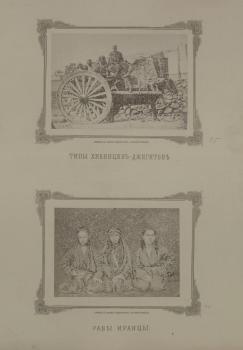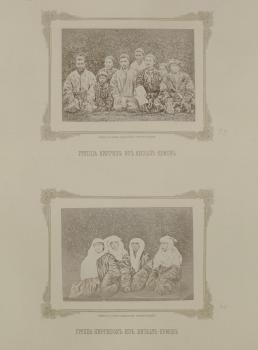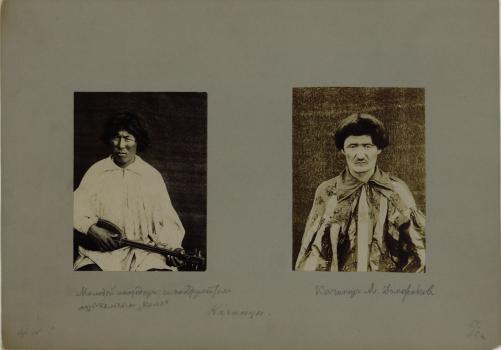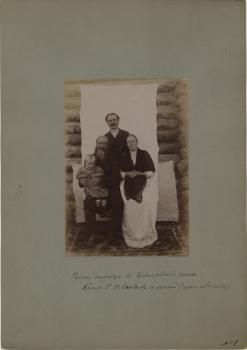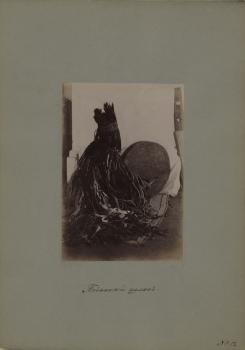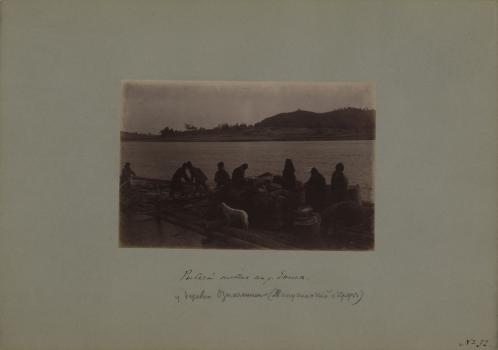Photo Trip around the Russian Empire
The invention of photography in the mid-19th century offered a new way of creating truthful psychological images and genre scenes. A photograph can show an accurate truth and still be a work of art. The works by Russian photographers make up an extensive photo gallery documenting the vast Russian Empire. Photographs depict forests, rivers, mountains and other landscapes, the local people and architecture, as well as scenes from the life in villages and cities.
Photographs began to come into the Imperial Public Library (now the National Library of Russia) in the mid-1850s. In 1856, the prominent Petersburg photographers S. Levitsky and A. Shpakovsky donated portraits of Russian cultural figures to the Library. In 1885, the famous art critic V. Stasov prepared the catalogue of the Photographic and Phototypic Collections of the Imperial Public Library. At that time, the Library already comprised a great number of photographs. V.Stasov gave a detailed description of the rarest and most valuable items.
Photography was used successfully by scientific researchers and by travellers, in archaelogical excavations and in architectural restoration work.
In 1858, the Imperial Geographical Society awarded a small gold medal to Mikhail Tulinov (1823-1889) for a survey of the Voronezh region and the accompanying photo album of national types and costumes. In 1867, Peter Pyatnitsky (? -1882) produced the Photo Collection of Ancient Churches and Types of Slavs in European Turkey, responding to the public interest in the Balkan Slavs who then fought against Turkish rule. The album of 80 perfect photographs presents landscapes and religious buildings as well as individual and group portraits of Slavs in Bosnia and Herzegovina.
In 1865, Andrey Denier (1820-1892), a graduate of the St Petersburg Academy of Arts, published monthly the Album of Photographic Portraits of Their Majesties and The Russia's Famous. In addition to portraits, each issue contains a photograph depicting various national types of Russia. Sometimes these are studio shots by Denier himself — for example, the March issue features a group of Samoyeds. Sometimes Denier used works by other masters: the picture of Dzhigits on the Eastern Coast of the Black Sea in the January issue was taken by photographers of the General Staff of the Caucasian Army.
The Scottish-Russian artist and photographer William Carrick (1827-1878) produced very successful photocopies of paintings as well as studio shots. But he made a name for himself as a pioneer of Russian photography from nature. Carrick started in the 1860s from a series 'street types of St. Petersburg and its suburbs'. He then visited the Novgorod province, Finland, and, between 1871 and 1875, the Volga region. He took natural photos of people, without any posing.
Stasov greatly appreciated the Turkestan Album, unique for tremendous breadth and scope of topics. This edition is extremely rare, because only six copies was released. The critic notes that "no other part of our country was shown in such exceptional completeness". The album consists of four parts: archaeological (vol. 1, vol. 2), ethnographic (vol. 3, vol. 4), trade (vol. 5) and historical (vol. 6). The album gives a vivid picture of the Central Asian region. The images depict people of the different ethnic groups, their customs, rituals, festivities, games and recreation, crafts, etc.
Of course, one photographer could not undertake such a grandiose project under very severe conditions and in such a short time. The pictures were produced by a group of photographers under the orientalist A. Kun over two years. The work was finished in 1872. The majority of the photographs belong to the photographer from Tashkent N. Nekhoroshev and the war photographer, lieutenant G. Krivtsov, who shot mainly views and people of Khiva and Kokand.
Stasov attracts special attention to the monumental five-volume edition Amur, Eastern Siberia, Western Siberia and the Urals, published by Rikker in 1870s. It was compiled from works by various masters. Stasov was impressed by fascinating landscapes and beautiful panoramic views of distant cities. Photographs provide "an inexhaustible wealth of new images that are completely unfamiliar not only to Europe, but also to the Russians". Ethnic photographs are also unusually interesting and varied. Subjects include mostly people in traditional costumes, with children, dogs, deer, tools, next to their dwellings.
A complement to this unique album is a three-volume set Album of the Amur and the Ussuri region (Far East), made by the local photographer V. Lanin in 1875-187. The third volume, titled Types and Figures, consists of images of people native to the Southeastern Siberian mainland and Sakhalin Island.
Unlike V. Lanin, the author of another album did not have to travel with search teams in the northern forest nor to follow in the footsteps of military expeditions, as the Turkestan Album's photographers. Photos from the series Views and Types of the 2nd Don District were produced by Ivan Boldyrev (1850 - after 1917) in his homeland. The images offer a magnificent insight into everyday life in the Don villages, capturing the appearance of Cossacks, military service scenes, etc.
The six-volume album Collection de types des peuples de Russie, Roumanie et Bulgarie (vol. 3) is fairly described by Stasov as a masterpiece, both artistically and technically. It features more than 200 views and portraits taken in many areas of Russia by the French-born photographer Jean Raoul. Only few complete copies of the album were released. They were distributed among royal persons or large institutions. The album, currently available at our Library, was originally intended for the Danish king Christian IX.
In 1878, the Library received the Album of Russian Costumes as a gift from the former Minister of Internal Affairs L. Makov. The unique album contains 532 photographs collected throughout Russia. The images contributed to designing the most popular military uniforms, with the introduction of conscription. The result was not only a large collection of the male costumes of Russia, but also a gallery of male portraits of the indigenous peoples of our vast country. These photographs are samples of best works by numerous photo studios, famous masters: residents of Kiev were photographed by Joseph Kordysh (1824-1878 or 1896), Andrey Karelin (1837-1906) worked in the Nizhny Novgorod province, M. Kraevsky — in Odessa, Joseph Khmelevsky (1849-1924) — in Vinnitsa etc.
In the late 1880s - 1900s, the stock of ethnographic images was further enriched with a significant number of photographs. Suffice it to mention the collection of 87 large-format photographs Types of Oriental Nations (1890s), which shows the people of the Central Asian region, pictures of folk holidays, religious ceremonies, scenes of teaching children, etc.
An eight-volume photo collection by Dmitry Ermakov (1845 or 1846-1916) is a true encyclopedia of the life in the Caucasus. In 1870, the photographer sent his views of Turkish Armenia to the Geographical Society in St. Petersburg. The Catalogue of Photographic Views and Types of the Caucasus, Persia, European and Asian Turkey, published in Tbilisi in 1896, contained a huge list of eighteen thousand photographs. Any image in the catalogue was available for purchase.
In the 1890s, the member of the Russian Photographic Society in Moscow Alexei Zavadsky produced the album Views of Little Russia. The same region (now Ukraine) is depicted in the Album of Little Russia, created in 1895 by Joseph Kordysh.
Even in the early days of photography, talented amateurs began to compete with professionals. Particularly interesting, from this point of view, is the Album of Views and Types of Western Siberia (Altai Album), highly praised by Stasov in his catalogue. The photographs were taken by one of the first women-photographers Lydia Poltoratskaya who won the silver medal of the Russian Geographical Society.
Many researchers, expedition members and military men developed the skills of photographer, learning how to operate a camera. Not all amateurs could reached the professional level, but without their images, the picture of multinational Russia would be incomplete. For instance, Lieutenant Grigory Krivtsov created a wonderful album titled Views and Types of the Khiva Khanate (1873), despite of the harsh conditions in which he lived and operated. The photos are not very well preserved, but they are still of great value to geographers, ethnographers, and archaeologists.
The writer and ethnographer Mikhail Krukovsky (1865-1936) is represented by his photo chronicles of two ethnographic surveys: to Belarus in 1898 and to the north Olonets province in 1899. The collection Views and Types of Northwestern Mongolia was prepared in 1879 by Alexander Adrianov (1854-1920) during the expedition of the Russian Geographical Society. The library catalogue also includes materials on the Yenisey by Peter Ostrovskikh (1870-1940) who traveled along the largest of the major Siberian rivers in 1894 and 1897.
The Russian Geographical Society actively engaged students. This is evidenced by two albums of a student of St. Petersburg University V. Kostko, that document his journey to the Mogilev region, made in 1903 and 1904 on assignment for the Society.
Many of Russian photographs were exhibited at all-Russian and foreign exhibitions and attracted the keenest attention of the cultural community. For example, contemporaries noted that the Russian section enjoyed great success at the Paris International Geographical Exhibition in 1875. The ethnographer V Maykov writes in his report, "... there were days when the number of visitors reached 12,000 people a day; many came ten times, asking permission to read, make extracts, take snapshots from drawings, photographs and maps. A dozen artists spent all day for two months, looking through ethnographic albums, from which they copied different portraits". The Turkestan General Governor K. P. von Kaufman, commisioned the Turkestan Album, was awarded a diploma with distinction at the exhibition. J. Raoul, A. Karelin, I. Boldyrev, L. Poltoratskaya and others get a lot of high awards at different times.
Thus, based on a growing interest in ethnographic photography, the Public Library has formed and continue to build an extensive collection of ethnographic images.
![V.V. Stasov <I>Photographic and Phototypic Collections of the Imperial Public Library</I> / [work by] Vl. V. Stasov. - St. Petersburg: V.S.Balashev Printing House, 1885 V.V. Stasov <I>Photographic and Phototypic Collections of the Imperial Public Library</I> / [work by] Vl. V. Stasov. - St. Petersburg: V.S.Balashev Printing House, 1885](/ve/dep/artupload/ve/article/RA4193/MA35171/s_NA38868.jpg)
![V.V. Stasov <I>Photographic and Phototypic Collections of the Imperial Public Library</I> / [work by] Vl. V. Stasov. - St. Petersburg: V.S.Balashev Printing House, 1885 V.V. Stasov <I>Photographic and Phototypic Collections of the Imperial Public Library</I> / [work by] Vl. V. Stasov. - St. Petersburg: V.S.Balashev Printing House, 1885](/ve/dep/artupload/ve/article/RA4193/MA35171/s_NA38869.jpg)
![V.V. Stasov <I>Photographic and Phototypic Collections of the Imperial Public Library</I> / [work by] Vl. V. Stasov. - St. Petersburg: V.S.Balashev Printing House, 1885 V.V. Stasov <I>Photographic and Phototypic Collections of the Imperial Public Library</I> / [work by] Vl. V. Stasov. - St. Petersburg: V.S.Balashev Printing House, 1885](/ve/dep/artupload/ve/article/RA4193/MA35171/s_NA38870.jpg)
